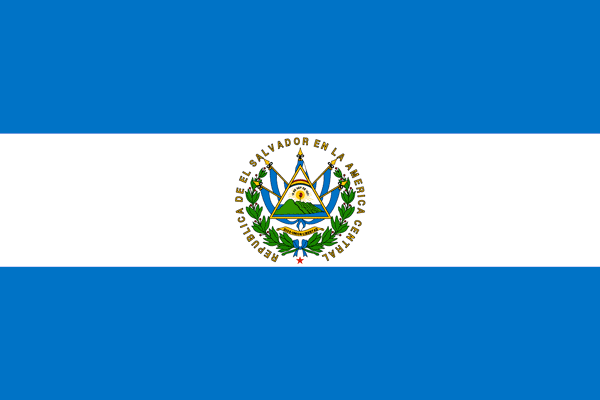A Brief Timeline of El Salvador:
2000 to 1000 BC- This is the formative period of the Maya whereby large competitive city-states were developed in from México to Panama.
200 to 800 AD- This is the classic period in which complex agricultural bureaucracies supported large Maya populations. Maya also predicted eclipses, discovered 0 in math, and developed highly effective hieroglyphics.
800 to 1000 AD- In the terminal classica period Maya civilization mysteriously collapses.
1000 to 1520 AD-The Maya had a revival period called the Post-classic period whereby commerce replaced religion as the dominant social force.
1300s AD- Maya city-states battle one another leading once again to Maya decline.
1500s AD-
Few tribes remained: Pok’omáme, Chorti, Lenca, Ulúa, and the Pipil.
The Pipil came from Mexico around 900 AD and comprised the largest indigenous group in the area. Cuscatlan, the Pipil capital, was also the largest city-state.
Their agricultural economy was based on corn.
Nahuat was the language of the Pipil (derived from the Nahuatl of Mexico).
The sailors who disembarked on the Island of Meanguera are considered to be the first Europeans to set foot on what is modern day El Salvador.
The Spanish exploited the lack of unity of the tribes as in Mexico and by 1540, the Spanish had gained complete domination over what is today El Salvador.
The Spanish quickly set up an agricultural society to exploit its fertile lands by constructing plantations to grow cotton, balsam, cacao and indigo.
The Spanish instituted a brutal labor system bringing misery to the indigenous populations.
By 1578 only 77,000 of the 500,000 original inhabitants survived a brutal plague.
1600s AD-
Economic depression hit.
An alternative labor system was implemented whereby workers became indebted to rich landowners (hacendados).
Bartolome de las Casas defends the indigenous populations in Latin America.
1700sAD-
Agricultural boom.
The late 1700 marked the beginning of the Salvadoran Nationalist Movement.
The Intendancy of El Salvador was established.
1800s AD-
A wealthy Europeanized elite started to rule society.
José Matías Delgado led the 1st uprising against the Spanish but failed.
Representatives from every Central American nation signed the Declaration of Independence from Spain and organized under the Mexican Empire.
In 1823, Central American Federation is formed.
In 1824, Anastacio Aquino led a peasant uprising.
In 1841, El Salvador withdrew from the Central American Federation achieving its independence.
In 1850 coffee begins to skyrocket.
In 1882, the government passed a law abolishing the last of the indigenous communal landholdings in order to create more coffee plantations, thus displacing peasants and forcing them to work on plantations.
By 1890, .5% of the entire Salvadoran population controlled 90% of the country’s wealth.
1900s AD-
First unions began to appear, however, it was believed that they threatened the government thus being made illegal.
El Salvador became the largest Central American country to import steel.
Rural areas remained underdeveloped.
In 1912, the National Guard was founded in order to keep peace in the countryside.
In the 1920s, world economic depression caused coffee prices to plunge.
In 1930, El Salvador’s Communist Party was founded.
La Matanza was a response by General Martínez to suppress the 1932 revolt believed to be Communist led. Over 30,000 people were massacred and the indigenous were forced to hide their identity for fear of being persecuted.
El Salvador remained under military rule up until 1979.
In 1940, El Salvador entered a decade-long dark age under General Martínez : national state of siege, limited political freedoms, prohibited union and opposition organization, national ID system, shutdown of independent press, and National Guard granted permission top search without a warrant.
Modernization was underway thus creating new jobs and a middle class.
In 1950, sugar and cotton become leading exports, however, food crops get pushed aside as a result.
The Constitution was rewritten to include a basic law about land reform.
In the 1960s, the middle class founded the Cristian Democrat Party thus creating hope fo a change in leadership.
In 1969, the Soccer War between El Salvador and Honduras was caused by the more than 300, 000 Salvadorans who had settled in Honduras and the inability of the two governments to agree on a the exact location of the border between the two countries.
In the 1970s social chaos arose as the government tried to repress the opposition and as a result the left organized and retaliated.
In 1975, over 50,000 students protested against the Miss Universe Pageant,, however, dozens were killed and wounded by police.
At the beginning of the 1980s the opposition saw revolution as the only way to affect change.
The Church becomes involved on behalf of the left.
On March 24th, 1980 Monseñor Oscar Romero was assassinated.
In October 1980 the Civil War was just beginning.
Throughout the 1980’s Ronald Reagan supported the Salvadoran Government, by sending over 1 million dollars per day in US Aid
In 1989, the FMLN (Farabundo Marti for National liberation) launched its last offensive.
In 1992, the Peace Accords were signed marking the end to a 12-year Civil War.
In 1998, a horrible hurricane hit El Salvador and many other Latin American Countries thus causing more families to want to leave.
2000 AD-
In 2001, a huge earthquake shook El Salvador putting 144,000 more people in poverty and causing 55,000 jobs to be lost.
Today the Salvadoran government still struggles with high unemployment rates, poverty, gangs, emigration, etc.
|
